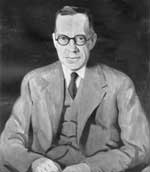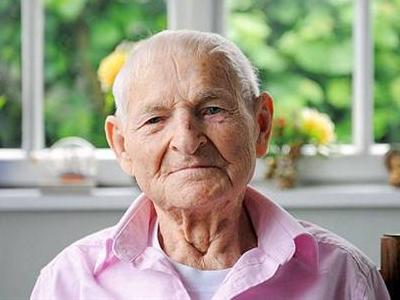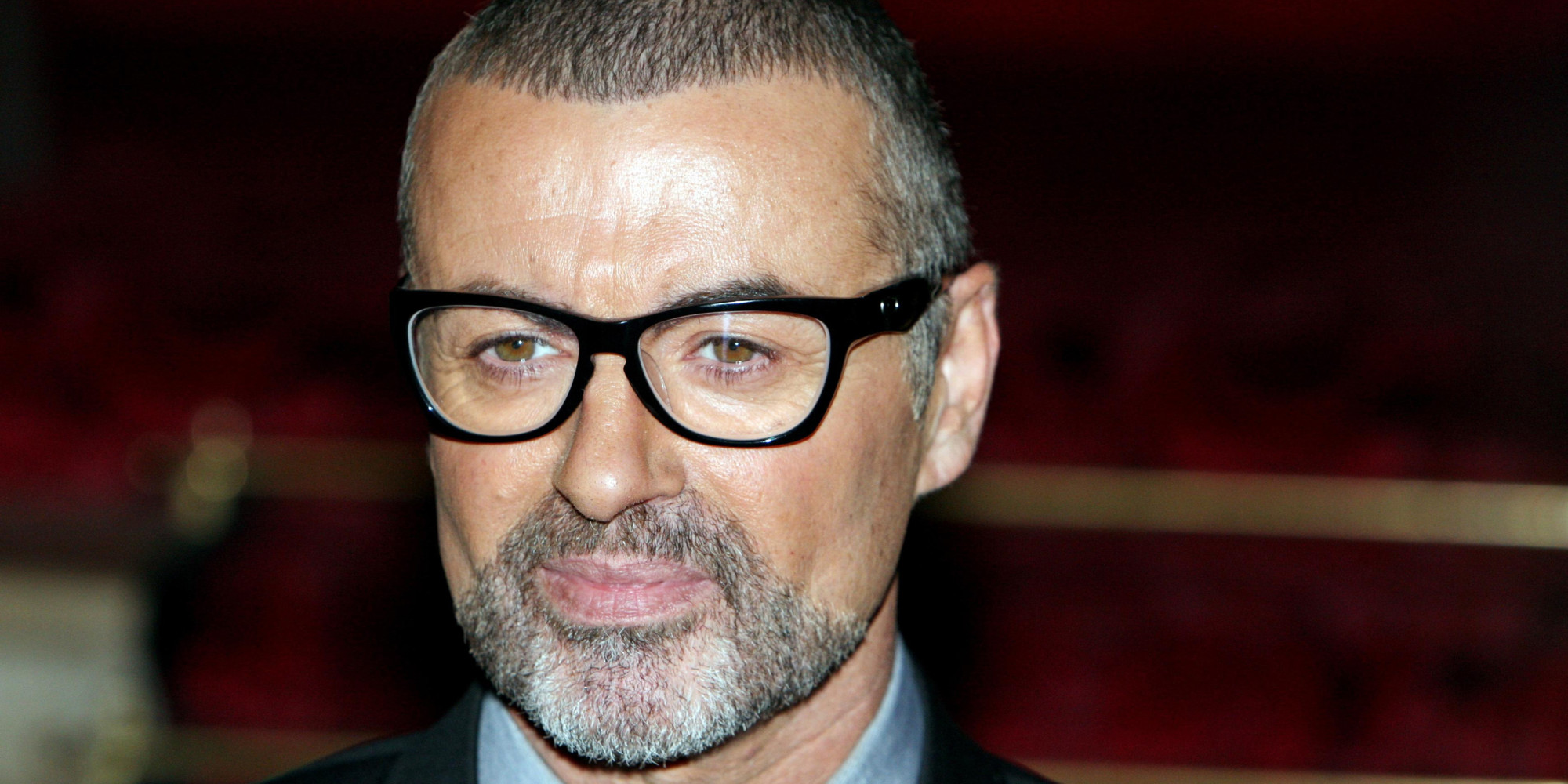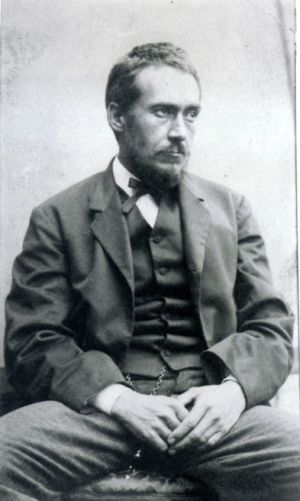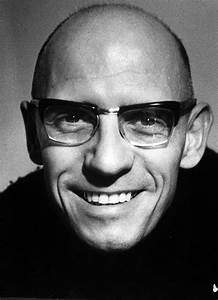|
Gay Wisdom for Daily Living brought to you by White Crane Institute ͏ ͏ ͏ ͏ ͏ ͏ ͏ ͏ ͏ ͏ ͏ ͏ ͏ ͏ ͏ ͏ ͏ ͏ ͏ ͏ ͏ ͏ ͏ ͏ ͏ ͏ ͏ ͏ ͏ ͏ ͏ ͏ ͏ ͏ ͏ ͏ ͏ ͏ ͏ ͏ ͏ ͏ ͏ ͏ ͏ ͏ ͏ ͏ ͏ ͏ ͏ ͏ ͏ ͏ ͏ ͏ ͏ ͏ ͏ ͏ ͏ ͏ ͏ ͏ ͏ ͏ ͏ ͏ ͏ ͏ ͏ ͏ ͏ ͏ ͏ ͏ ͏ ͏ ͏ ͏ ͏ ͏ ͏ ͏ ͏ ͏ ͏ ͏ ͏ ͏ ͏ ͏ ͏ ͏ ͏ ͏ ͏ ͏ ͏ ͏ ͏ ͏ ͏ ͏ ͏ ͏ ͏ ͏ ͏ ͏ ͏ ͏ ͏ ͏ ͏ ͏ ͏ ͏ ͏ ͏ ͏ ͏ ͏ ͏ ͏ ͏ ͏ ͏ ͏ ͏ ͏ ͏ ͏
|
|
||||
| This Day in Gay History | ||||
June 25Born 1876 - Irish novelist, literary critic and translator FORREST REID, was born (d: 1948); Reid was a close friend of E.M. Forster, and their works are in some respects quite similar, through Reid’s are unfairly neglected today. As Francis King writes, “Reid led a simple life in the company of his dogs and cats and the boys whom he befriended. An extremely ugly man, he was a pederast who, like many pederasts, perpetually harked back to the lost heaven that had lain about him in his boyhood. He is usually represented as having been happy and uncomplicated; but in fact his was a dark, involuted, troubled nature and in the course of his life he made more than one attempt at suicide. When, as inevitably happened, the boys whom he loved grew up, had girlfriends and got married, he indulged in scenes of bitter recrimination and maudlin self-pity.” While still in his twenties, Reid correctly surmised that Henry James was Gay and dedicated his mildly homosexual novel The Garden God: A Tale of Two Boys (1905) to the American writer. James, true to his nature, was not flattered and publicly condemned the book for its “artless portrayal of sinister matters.” His Following Darkness (1912) was said to have been an inspiration for James Joyce's Portrait of the Artist as a Young Man. A later book was dedicated to Forster, who was delighted. It was to Reid that Forster felt able to write about the loss of his beloved Charles Mauron in WWII. In 1952 Forster traveled to Belfast to unveil a plaque commemorating Forrest Reid's life (at 13 Ormiston Crescent). 1913 - RUDOLF BRAZDA, believed to be the last surviving man to wear the pink triangle — the emblem sewn onto the striped uniforms of the thousands of homosexuals sent to Nazi concentration camps, most of them to their deaths — was born on this date. Mr. Brazda, who was born in Germany, had lived in France since the Buchenwald camp, near Weimar, Germany, was liberated by American forces in April 1945. He had been imprisoned there for three years. It was only after May 27, 2008, when the German National Monument to the Victims of the Nazi Regime was unveiled in Berlin’s Tiergarten park — opposite the Memorial to the Murdered Jews of Europe — that Mr. Brazda became known as probably the last gay survivor of the camps. Until he notified German officials after the unveiling, the Lesbian and Gay Federation believed there were no other pink-triangle survivors. Mémorial de la Déportation Homosexuelle, a French organization that commemorates the Nazi persecution of gay people, said that Mr. Brazda “was very likely the last victim and the last witness” to the persecution. “It will now be the task of historians to keep this memory alive,” the statement said, “a task that they are just beginning to undertake.” One of those historians is Gerard Koskovich, curator of the Gay, Lesbian, Bisexual and Transgender History Museum in San Francisco and an author with Roberto Malini and Steed Gamero of “A Different Holocaust” (2006). Pointing out that only men were interned, Mr. Koskovich said, “The Nazi persecution represented the apogee of anti-Gay persecution, the most extreme instance of state-sponsored homophobia in the 20th century. During the 12-year Nazi regime, he said, up to 100,000 men were identified in police records as homosexuals, with about 50,000 convicted of violating Paragraph 175, a section of the German criminal code that outlawed male homosexual acts. There was no law outlawing female homosexual acts, he said. Citing research by Rüdiger Lautmann, a German sociologist, Mr. Koskovich said that 5,000 to 15,000 gay men were interned in the camps and that about 60 percent of them died there, most within a year. “The experience of homosexual men under the Nazi regime was one of extreme persecution, but not genocide,” Mr. Koskovich said, when compared with the “relentless effort to identify all Jewish people and ultimately exterminate them.” Still, the conditions in the camps were murderous, said Edward J. Phillips, the director of exhibitions at the United States Holocaust Memorial Museum. “Men sent to the camps under Section 175 were usually put to forced labor under the cruelest conditions — underfed, long hours, exposure to the elements and brutal treatment by labor brigade leaders,” Mr. Phillips said. “We know of instances where gay prisoners and their pink triangles were used for guards’ target practices.” Two books have been written about Mr. Brazda. In one, “Itinerary of a Pink Triangle” (2010), by Jean-Luc Schwab, Mr. Brazda recalled how dehumanizing the incarceration was. “Seeing people die became such an everyday thing, it left you feeling practically indifferent,” he is quoted as saying. “Now, every time I think back on those terrible times, I cry. But back then, just like everyone in the camps, I had hardened myself so I could survive.” Rudolf Brazda was born on June 26, 1913, in the eastern German town of Meuselwitz to a family of Czech origin. His parents, Emil and Anna Erneker Brazda, both worked in the coal-mining industry. Rudolf became a roofer. Before he was sent to the camp, he was arrested twice for violations of Paragraph 175. After the war, Mr. Brazda moved to Alsace. There he met Edouard Mayer, his partner until Mr. Mayer’s death in 2003. He had no immediate survivors. “Having emerged from anonymity,” the book “Itinerary of a Pink Triangle” says of Mr. Brazda, “he looks at the social evolution for homosexuals over his nearly 100 years of life: ‘I have known it all, from the basest repression to the grand emancipation of today.’ ” He died on August 3, 2011 in Bantzenheim, in Alsace, France. He was 98. 1935 - LARRY KRAMER, American dramatist, author, activist, founder of ACT-UP was born on this date. "We're all going to go crazy, living this epidemic every minute, while the rest of the world goes on out there, all around us, as if nothing is happening, going on with their own lives and not knowing what it's like, what we're going through. We're living through war, but where they're living it's peacetime, and we're all in the same country." Kramer was born Bridgeport, Connecticut and was educated at Yale University (class of 1957). He lived in London 1961-70, where he co-produced and co-wrote the film Here We Go Round the Mulberry Bush. Kramer next produced and wrote the screenplay for Women in Love, based on the novel by D. H. Lawrence, which was nominated for an Academy Award. Kramer had far less luck on his next film, a musical version of James Hilton's Lost Horizon released in 1973. It became one of the most notorious flops of the decade. Kramer was a Gay Rights advocate from the early 1970s, but never an orthodox one. His 1978 novel, Faggots, was one of the best-selling Gay-themed novels, but was heavily criticized by many Gay activists for its negative portrayal of Gay men’s sex lives and habits. Kramer was living in New York City when the AIDS epidemic began in 1981. He published a series of articles in the Gay newspaper the New York Native, including the famous "1,112 and Counting," urging action in response to the new epidemic. He was one of the founders of Gay Men's Health Crisis, a New York-based AIDS advocacy organization, which is still the world's largest provider of services to Gay men with AIDS. In 1987, increasingly discontented with the response to AIDS by both the U.S. government and the Gay male community, Kramer helped found the AIDS Coalition to Unleash Power (ACT-UP), an AIDS advocacy and protest organization often engaged in civil disobedience. Kramer's 1985 play about the early years of AIDS, The Normal Heart, remains one of the most important cultural responses to the devastation of AIDS in the 1980s. It has had over 600 productions all over the world. Its New York production starred Brad Davis, who later died of AIDS. It is now used as a set text in many schools and universities. His next play, Just Say No (1988), was an attack on the Reagan administration and the Mayor of New York, Ed Koch, over what Kramer saw as their hypocrisy and inertia in responding to AIDS. It was less successful than The Normal Heart, possibly due to its sharply political tone. In 1989 Kramer published a book of non-fiction, Reports from the Holocaust: The Making of an AIDS Activist, a collection of his political writings from The York Times and other publications, which is an important record of the "heroic phase" of AIDS activism in the 1980s. During the 1990s, following his own diagnosis with HIV infection, Kramer became increasingly preoccupied with treatment issues, although he continued to issue regular polemical attacks on governments and health authorities. In 1998, he founded the Treatment Data Project, a coalition of private sector donors and medical institutes, designed to make AIDS treatment more readily available to people with HIV/AIDS. We Must Love One Another Or Die: The Life and Legacies of Larry Kramer, an anthology of essays edited by Lawrence D. Mass, is an important source on Kramer's career and the issues he has worked on. In April 2001, Yale formally accepted a donation of Kramer's literary and political papers, along with a one million dollar donation from Kramer's brother Arthur Kramer to endow a Gay and Lesbian studies program. Kramer had been discussing the donation with Yale for several years, and the University had rejected a similar donation in 1997. Commenting on the results of their donation, in 2004, Kramer said: "My own college, Yale, with $1 million of my own brother’s money to do just this, will not teach what I call Gay history, unencumbered with the prissy incomprehensible gobbledygook of gender studies and queer theory." Kramer’s play The Normal Heart premiered on HBO as a film produced by Brad Pitt, Ryan Murphy (Glee) and Scott Ferguson, and starring Mark Ruffalo. Matt Bomer, Jim Parsons, Alfred Molina, and Julia Roberts. 1963 - GEORGE MICHAEL, British musician, born; Georgios Kyriacos Panayiotou, best known as George Michael, was a two-time Grammy Award winning English singer-songwriter who had a career as frontman of the duo Wham! and also as a soul-influenced pop musician. He sold over 85 million records worldwide, encompassing twelve British #1 singles, nine British #1 albums, ten US #1 singles, and two US #1 albums. His 1987 debut solo album, Faith, sold over 20 million copies to date. George Michael was the most played artist on British radio over the past two decades. Michael was initially private about his sexual orientation, with rumors of relationships with high-profile women such as Brooke Shields, Whoopi Goldberg, and Melissa Megginson making him common tabloid fodder during his Wham! career. These persisted into his solo career, but Michael had established a relationship with Anselmo Feleppa, whom he had met at the 1991 concert "Rock in Rio". Feleppa died of an AIDS-related complications in 1993. Michael's single “Jesus to a Child" is a tribute to Feleppa (he consistently dedicates it to him before performing it live), as is his 1996 album Older. In a 2007 interview, Michael said he kept his sexuality secret due to worries over the impact it would have on his mother. Questions of his sexual orientation persisted in public until April 1998, when he was arrested for "engaging in a lewd act" in a public toilet in a park in Beverley Hills. He was arrested by an undercover policeman named Marcelo Rodríguez, a sting operation using so-called "pretty police". After that incident he became open about his sexuality and his relationship with Kenny Goss, a former cheerleader coach and sports clothing executive from Dallas, Texas, and his partner since June 1996. Goss opened the Goss Gallery in May 2005 in Dallas, which shows contemporary art, including those collected by the couple. Michaels died of heart failure on Christmas Day, 2016. Died 1916 - THOMAS EAKINS, American artist died on this day (b.1844); A painter, photographer, sculptor, fine arts educator, he was one of the greatest American painters of his time, an innovating teacher, and an uncompromising realist. He was also the most neglected major painter of his era in the U.S. A letter home to his father in 1868 made his aesthetic clear: "[the female nude] is the most beautiful thing there is in the world except a naked man, but I never yet saw a study of one exhibited ... It would be a godsend to see a fine man model painted in the studio with the bare walls, alongside of the smiling smirking goddesses of waxy complexion amidst the delicious arsenic green trees and gentle wax flowers & purling streams running melodious up & down the hills especially up. I hate affectation." His portrait of Walt Whitman was the poet's favorite. Link here For a collection of his beautiful images. Eakins has been credited with having "introduced the camera to the American art studio". During his study abroad, he was exposed to the use of photography by the French realists, though the use of photography was still frowned upon as a shortcut by traditionalists. In the late 1870s he was introduced to the photographic motion studies of Eadweard Muybridge, particularly the equine studies, and became interested in using the camera to study sequential movement. He performed his own motion studies, usually involving the nude figure, and even developed his own technique for capturing movement on film. Where Muybridge's system relied on a series of cameras triggered to produce a sequence of individual photographs, Eakins preferred to use a single camera to produce a series of exposures on one negative. Since the 1990s, Eakins has emerged as a major figure in sexuality studies in art history, for both the seeming homoeroticism of his male nudes and for the complexity of his attitudes toward women. Controversy shaped much of his career as a teacher and as an artist. He insisted on teaching men and women "the same", used nude male models in female classes and vice versa, and was accused of abusing female students. Recent scholarship suggests that these controversies were grounded in more than the "puritanical prudery" of his colleagues (as has been assumed). Today, scholars see these controversies as caused by a combination of factors such as the bohemianism of Eakins and his circle (in which students, for example, sometimes modeled in the nude for each other), and Eakins's inclination toward provocative behavior. 1984 - MICHEL FOUCAULT, French philosopher died on this date (b. 1926); Foucault was a French philosopher, historian, critic and sociologist. He held a chair at the Collége de France, giving it the title "History of Systems of Thought," and taught at the University of California, Berkeley. Foucault is best known for his critical studies of social institutions, most notably psychiatry, medicine, the human sciences, and the prison system, as well as for his work on the history of human sexuality. One of the leading philosophers of the twentieth century, Michel Foucault has had an enormous influence on our understanding of the lesbian and Gay literary heritage and the cultural forces surrounding it. In his explorations of power and his examinations of the history of sexuality, Foucault traces the ways in which discourse shapes perception, focusing often on those individuals and practices considered marginal or abnormal, but finding in them keys to understanding the fragile and imperfect ways that power is deployed by the upper classes, the medical establishment, the scientific community, and the literary and political elite. Three volumes of The History of Sexuality were published before Foucault's AIDS-related death in 1984. The first and most referenced volume, The Will to Knowledge (previously known as An Introduction in English — Histoire de la sexualité, 1: la volonté de savoir in French) was published in France in 1976, and translated in 1977, focusing primarily on the last two centuries, and the functioning of sexuality as an analytics of power related to the emergence of a science of sexuality (scientia sexualis) and the emergence of biopower in the West. The second two volumes, The Use of Pleasure (Histoire de la sexualite, II: l'usage des plaisirs) and The Care of Self (Histoire de la sexualité, III: le souci de soi) dealt with the role of sex in Greek and Roman antiquity. Both were published in 1984, the year of Foucault's death, with the second volume being translated in 1985, and the third in 1986. In his lecture series from 1979 to 1980 Foucault extended his analysis of government to its 'wider sense of techniques and procedures designed to direct the behavior of men', which involved a new consideration of the 'examination of conscience' and confession in early Christian literature. However, Foucault's death left the work incomplete, and the planned fourth volume of his History of Sexuality in Christianity was never published. The fourth volume was to be entitled Confessions of the Flesh (Les aveux de la chair). The volume was almost complete before Foucault's death and a copy of it is privately held in the Foucault archive. It cannot be published under the restrictions of Foucault's estate. Foucault advanced a new understanding of the birth of modern consciousness about sexual identity, finding in the concepts of the "heterosexual" and "homosexual" not only a construction of identity for the purposes of regulation, but also a starting point for subversion and resistance. As many theorists now argue, these narrow notions of identity can be both confining and liberating. Noteworthy 1978 - The RAINBOW FLAG is first displayed in the San Francisco Gay Pride Parade. While Gilbert Baker is widely recognized as the creator of the Rainbow Flag, the origins of the flag remain controversial. Activist and author, Lee Mentley asserts -- we think correctly -- that it was made by artists from Eureka Noe Valley Artist’s Coalition, The Hula Palace, and Gay Freedom Day community volunteers in Top Floor Gallery. Mentley, in his recent book, The Princess of Castro Street [ISBN-10: 1533323844 - ISBN-13: 978-1533323842], disputes the origin story of the flag told by Gilbert Baker who claimed the flag design as his own. According to Mentley: “…Gilbert Baker who could barely finish any project he ever started was the 1978 co-chair of the Gay Day Decorating Committee would later … claim he created the rainbow flags all by himself, at Harvey’s [Milk] request nonetheless—but the artists knew he was no Betsy Ross! “Lynn Segerblon who was the other co-chair with Gilbert Baker of the Gay Day Decorating Committee, along with Hula Palace artist Robert Guttmann, presented their original idea to the Pride Board of the rainbow flag concept. “The Pride Foundation requested and found funding through the Hotel Tax. Lynn was the rainbow artist for Capezio downtown and professionally known as Faery Rainbow Argyle. It was Ms. Faery who, working with others, chose the colors and mixed the dye for one thousand yards of bleached muslin and designed the Rainbow and Rainbow American Flag, with a sole star placed within the stripes symbolizing “The State of Consciousness.” “More than one hundred artists worked on this amazing project.” The flag consisted of eight stripes: hot pink: sexuality; red: life; orange; healing; yellow: sunlight; green: nature; turquoise; magic/art; indigo: serenity/harmony; and violet: spirit. After the assassination of Harvey Milk, there was an increased demand for the flags. To meet that demand, the Paramount Flag Company began selling a version of the flag using stock rainbow fabric consisting of seven stripes of red, orange, yellow, green, turquoise, blue, and violet. In 1979 the flag was modified again. When hung vertically from the lamp posts of San Francisco's Market Street, the center stripe was obscured by the post itself. Changing the flag design to one with an even number of stripes was the easiest way to rectify this, so the turquoise stripe was dropped, which resulted in a six stripe version of the flag - red, orange, yellow, green, blue, and violet. Naturally, in the modifications, the two color elements that were lost: sex and magic/art. In the early years of the AIDS epidemic, AIDS activists designed a "Victory Over AIDS" flag consisting of the standard six-stripe rainbow flag with a black stripe across the bottom. Leonard Matlovich, himself dying of AIDS-related illness, suggested that upon a cure for AIDS being discovered, the black stripes be removed from the flags and burned. Whoever actually designed it, Daily GayWisdom pays tribute to the rainbow with the colors of every entry in GayWisdom. | ||||
|
|8|O|8|O|8|O|8|O|8|O|8|O|8|O|8| Gay Wisdom for Daily Living from White Crane Institute "With the increasing commodification of gay news, views, and culture by powerful corporate interests, having a strong independent voice in our community is all the more important. White Crane is one of the last brave standouts in this bland new world... a triumph over the looming mediocrity of the mainstream Gay world." - Mark Thompson Exploring Gay Wisdom & Culture since 1989! |8|O|8|O|8|O|8|O|8|O|8|O|8|O|8| | ||||
|
|||||
|

